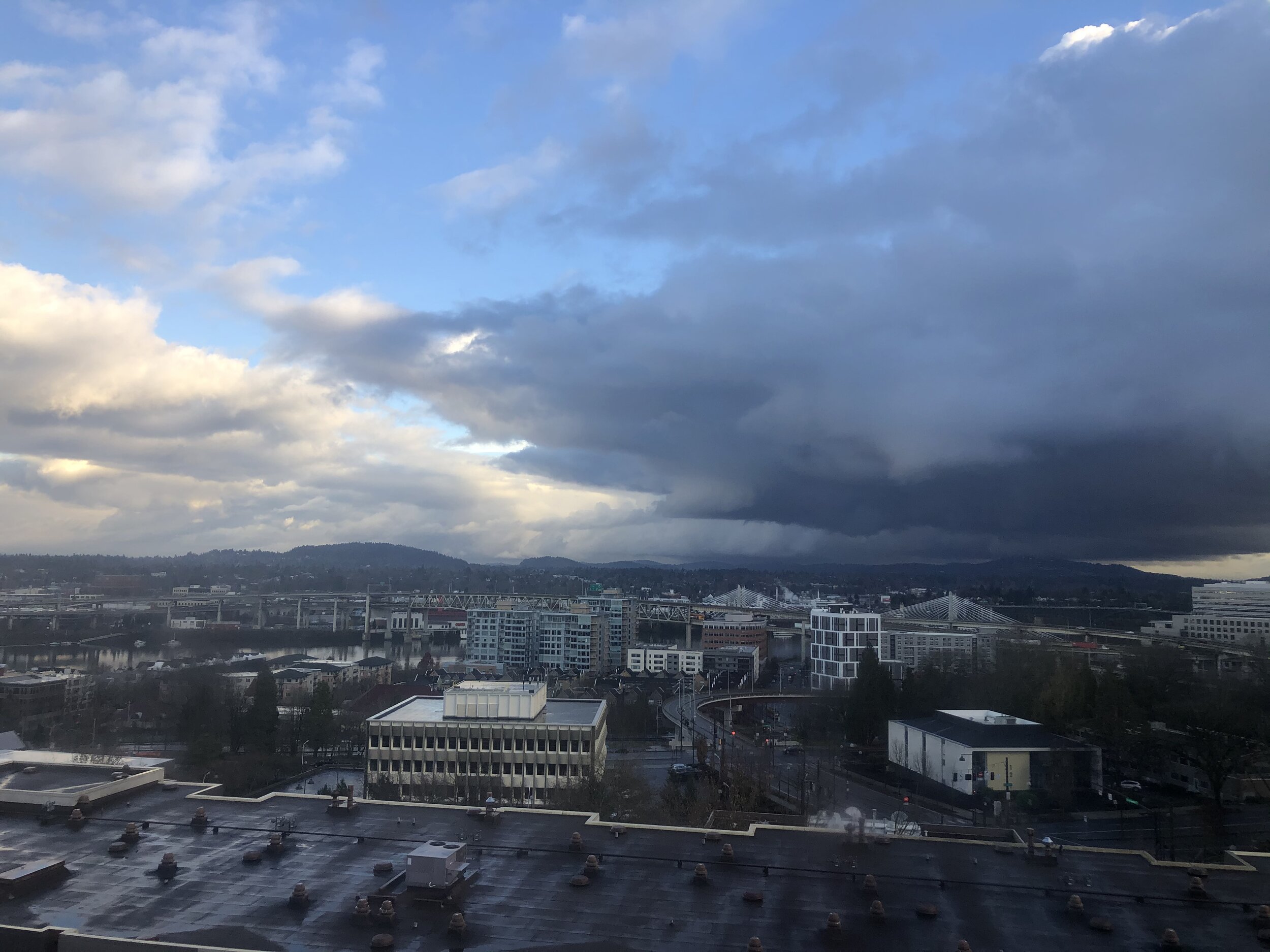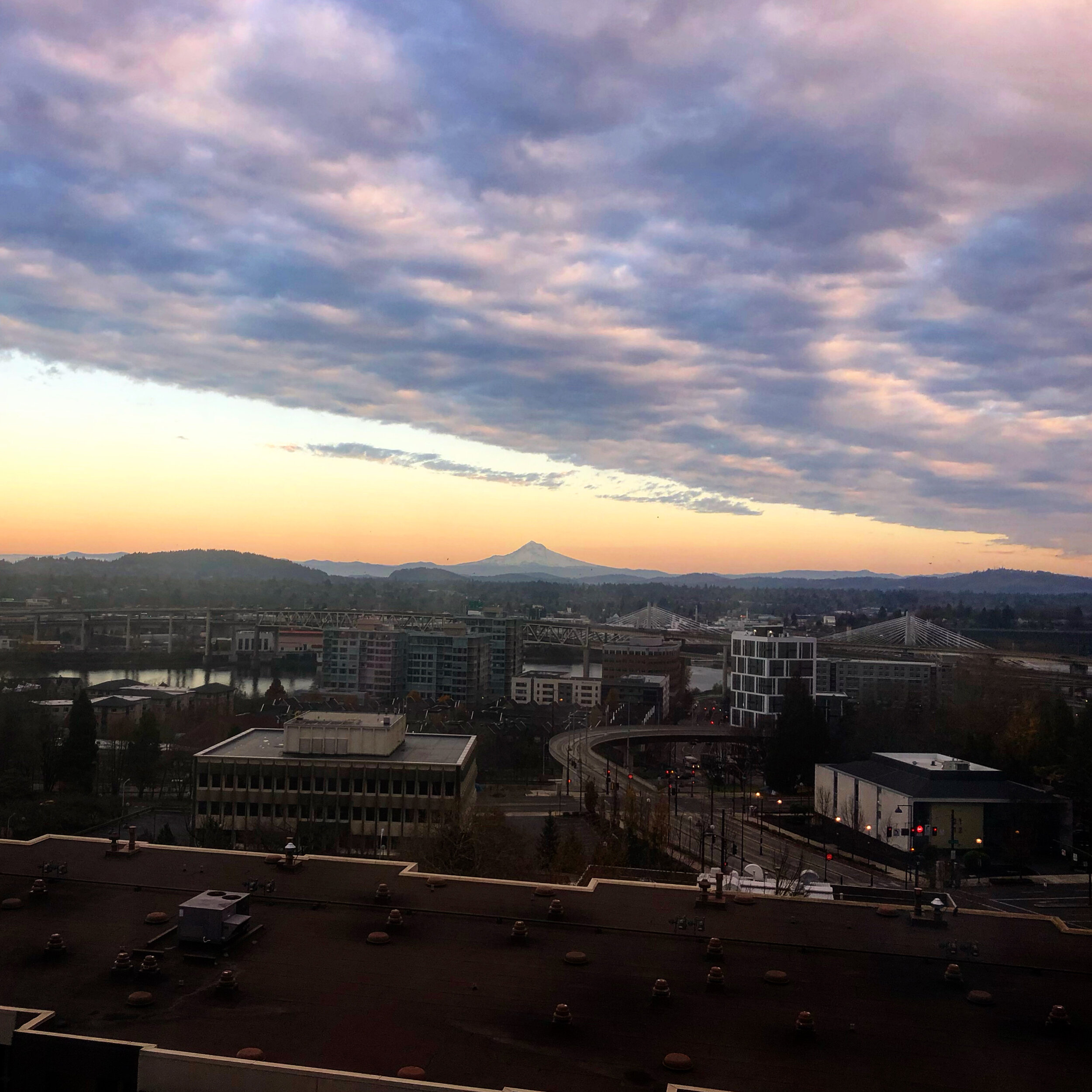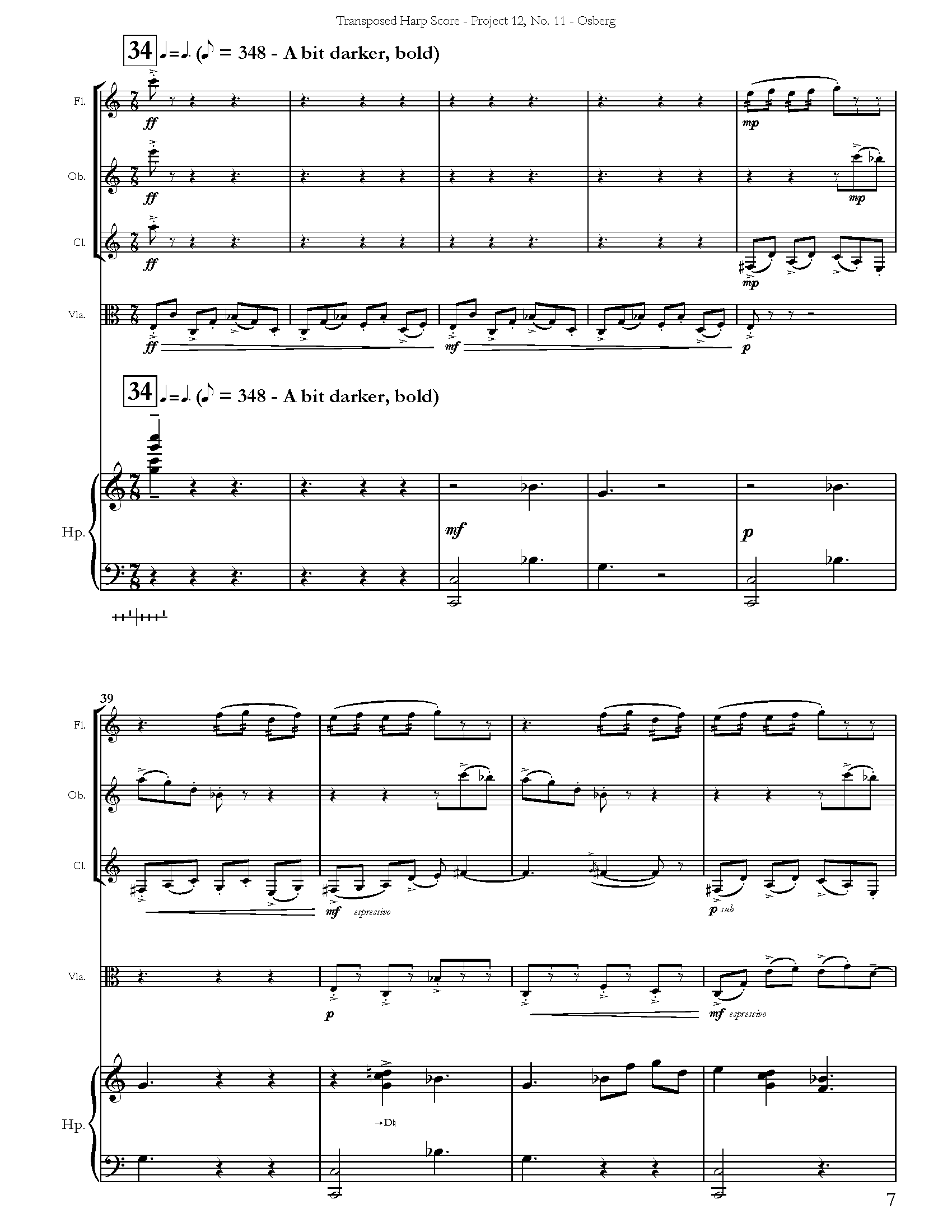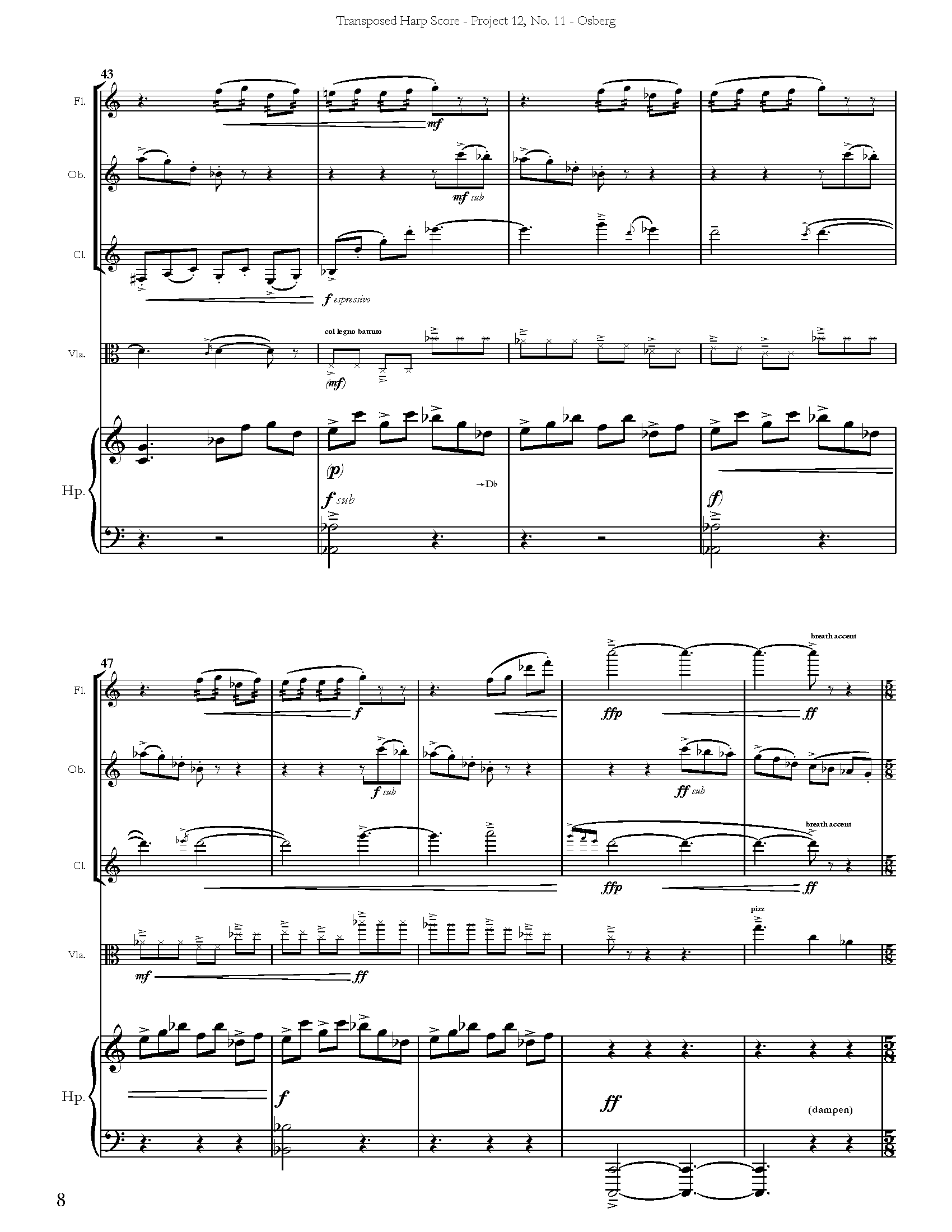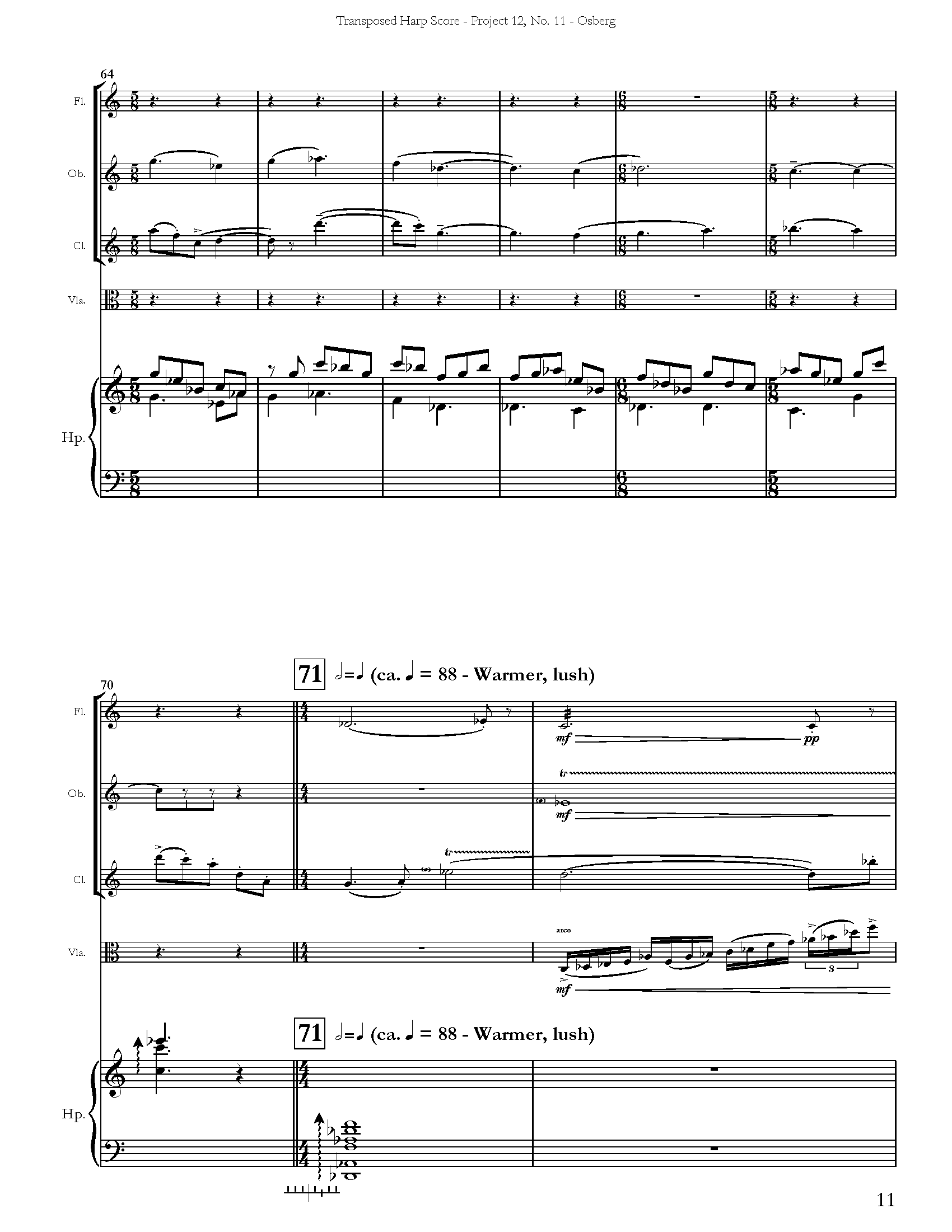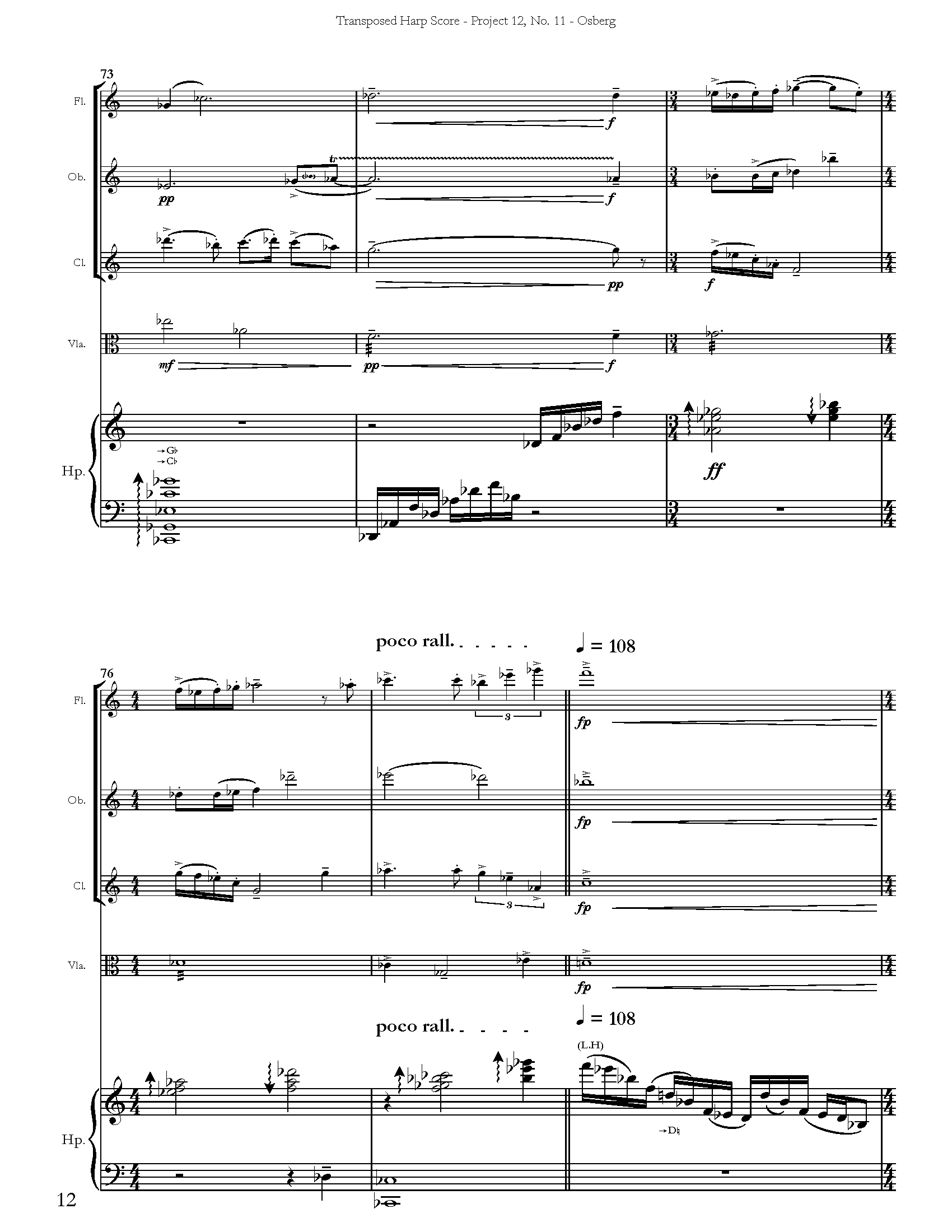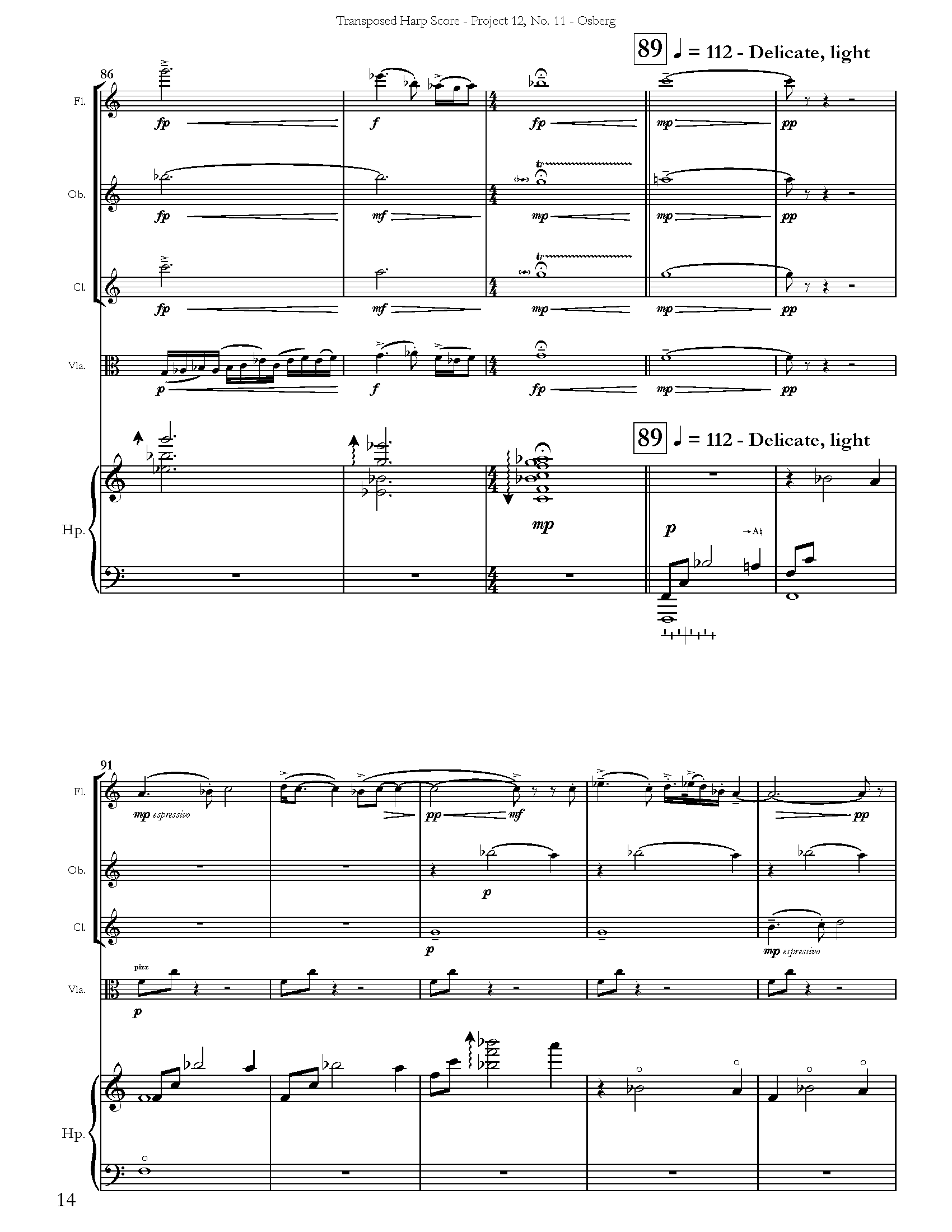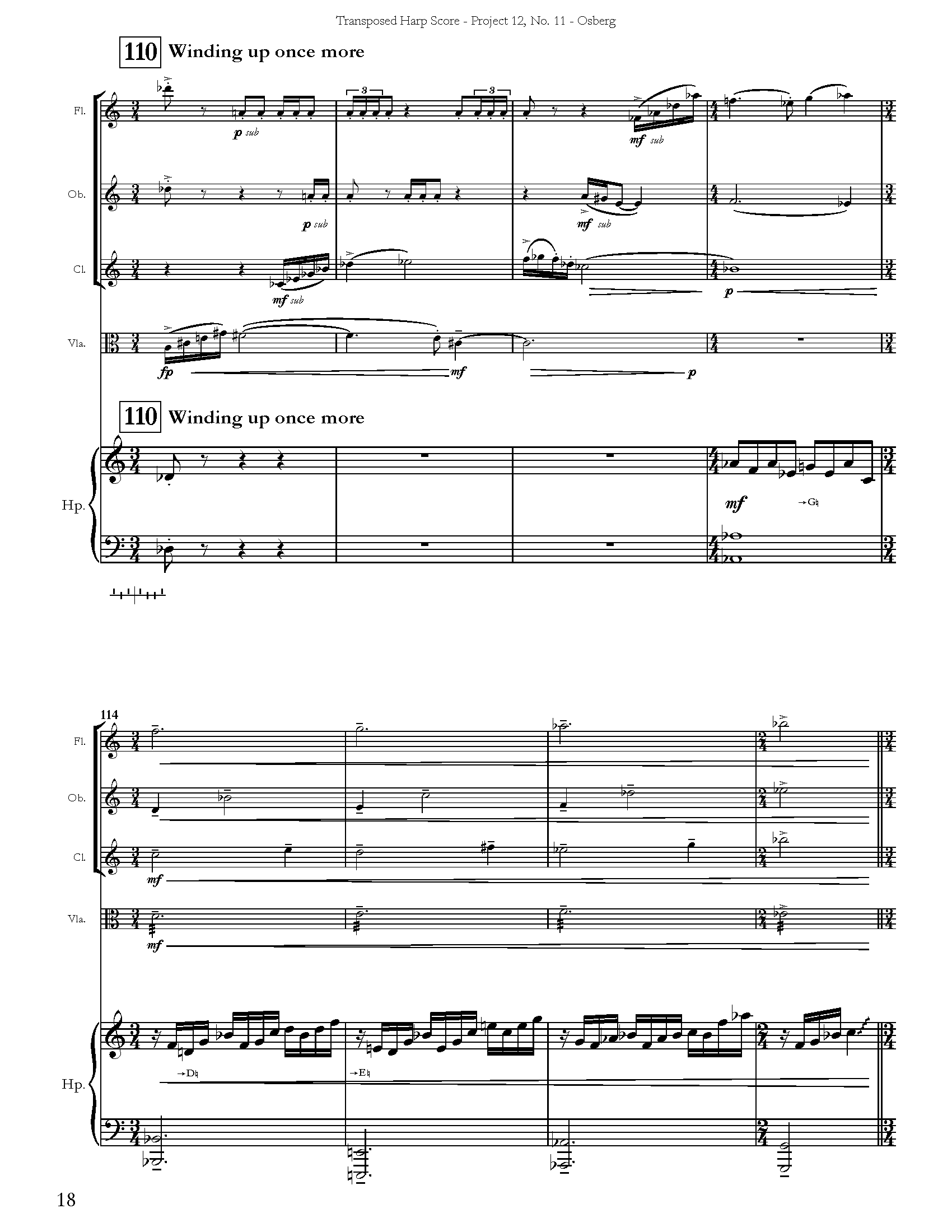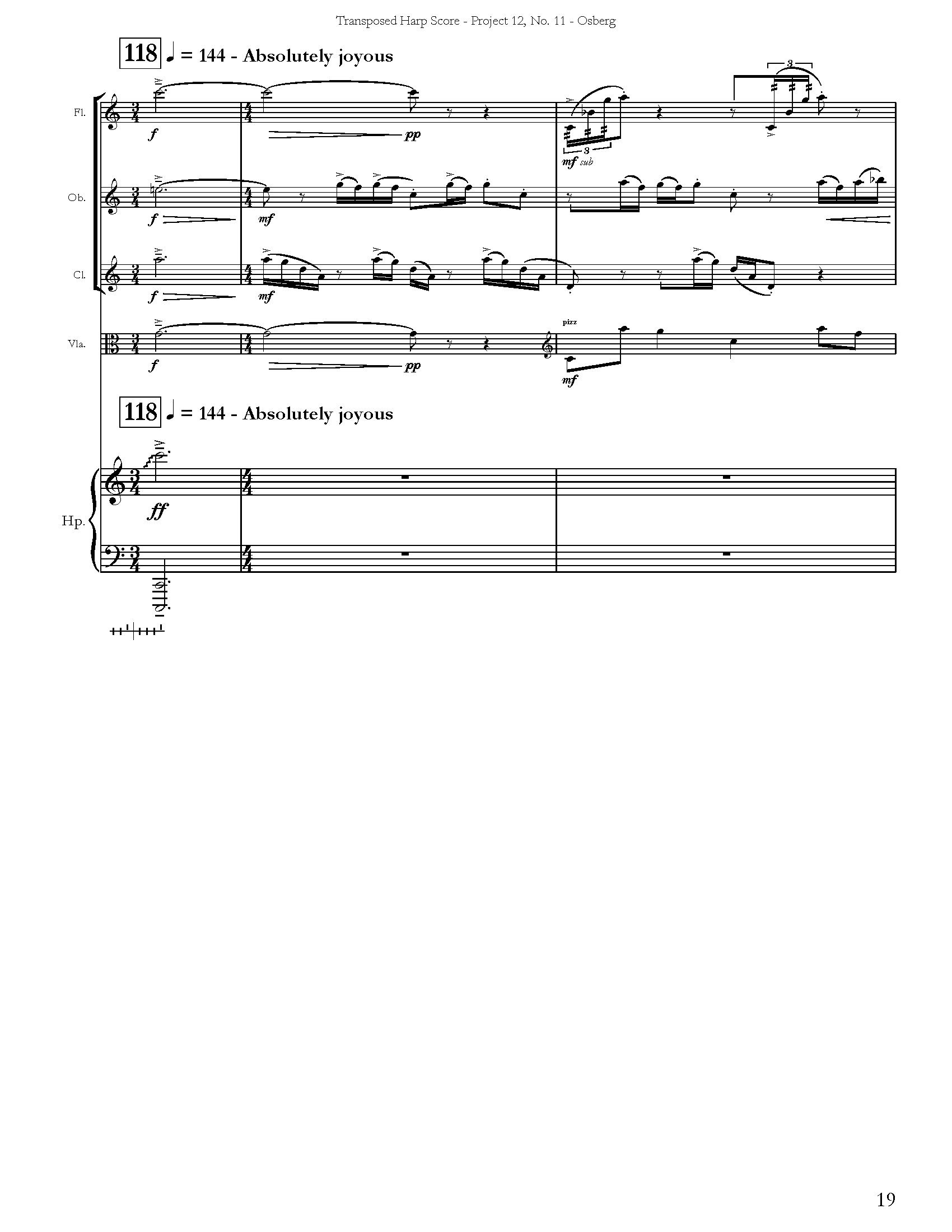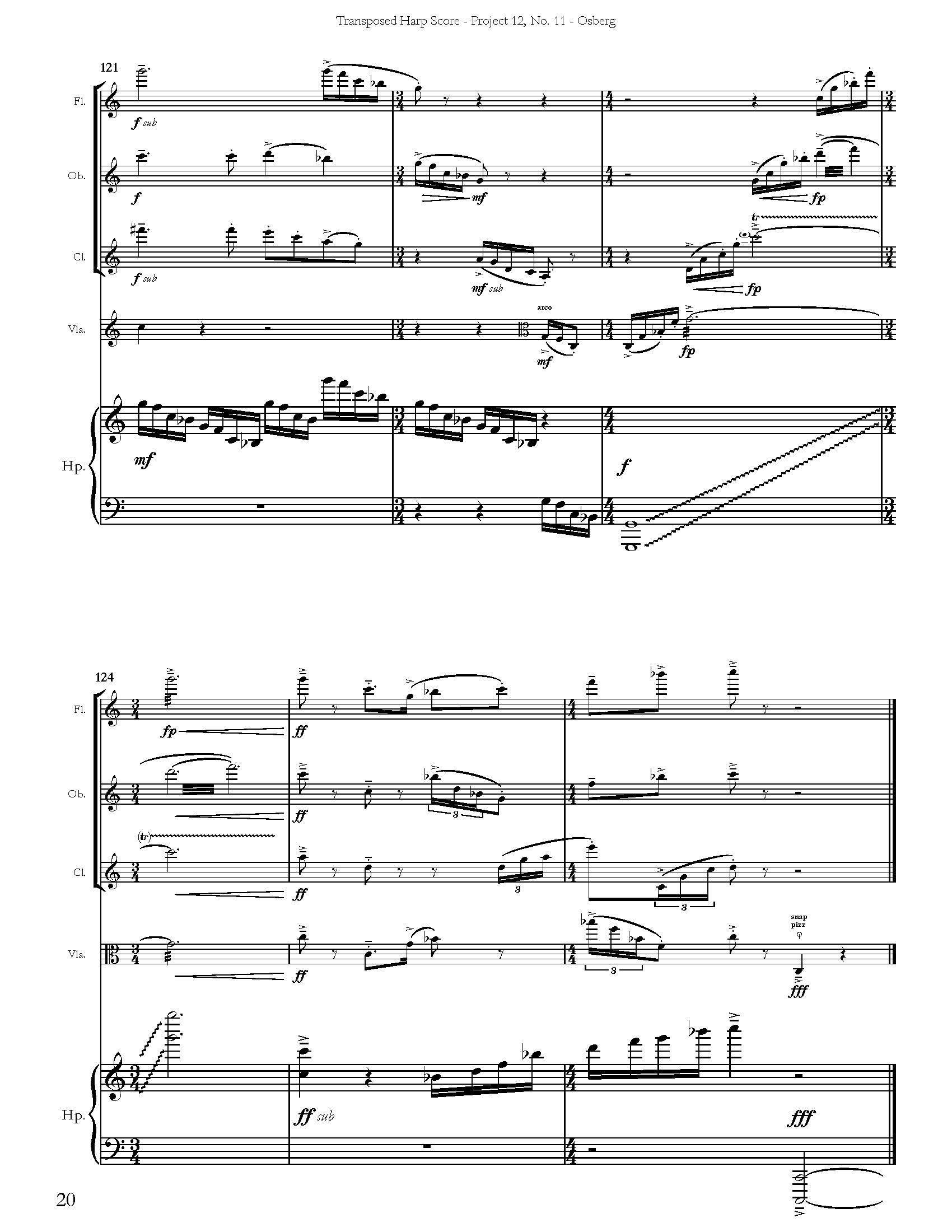Project 12: Just Another Blog Post
Nothing like a beautifully calm, pastel sky to provide a moment of peace in a crazy week!
A few weeks ago, I had the great pleasure of speaking with Elisabeth Remy Johnson, the principal harpist of the Atlanta Symphony Orchestra and founder of The Merian Ensemble. She told me The Merian Ensemble was named after Maria Sibylla Merian, a naturalist who was overlooked in her time but whose contributions were vital for the field of entomology. Their ensemble aims to use performances of works written and/or inspired by similarly overlooked and undervalued women. Both Elisabeth and their flutist, Christina Smith, emphasized that it was important to them not just to commission living women but to perform works by women throughout every era of classical music history.
A brief aside
For those interested, I’ve listed a few of my favorite free resources for finding historical music by underrepresented composers here:
The Historic Composers Directory and Living Composers Directory (from the Music By Black Composers website)
The Chamber Music Equity Project PDF by Chamber Music America
Piano Music, She Wrote (curated and recorded by pianists Erica Sipes and Sandra Mogensen)
Archiv Frau und Musik (Archive of Women in Music International Research Center, focusing on solo guitar works by women as curated by guitarist Heike Matthiesen)
While this list is certainly not exhaustive, these are resources I find myself using regularly as I further educate myself on the wide array of compositional voices that were active in past eras. A few of my favorite discoveries from the past year include Chiquinha Gonzaga, Lady Viola Kinney, Eva Jessye, and—of course—Florence Price (if you love Florence Price, be sure to check out the International Florence Price Festival website!). One area of interest in particular for me is Rio de Janiero during the 1800s, which became just as much of a cultural hub for art and music as Vienna, Paris, or London—though it rarely comes up in music school! If you haven’t taken the opportunity to listen to composers outside of the standard concert hall picks, definitely check out some of these fantastic resources and composers!
Back to the music!
Wrap-Up: Just Another Climb
As I talked with Elisabeth and Christina about their goals for the project, I began to think about what woman or group of women I wanted to write about. There was Merian herself, of course—though I didn’t think 5 minutes was enough time to do their namesake justice! As I brainstormed a few women who had inspired me, I gazed out of my window at Mount Hood. I have always loved mountains, and it wasn’t until this year I realized my dream of living within sight of one (if you’ve noticed the thumbnails for these posts, you can guess how I feel about my view)! I began to think about the various attempts I had made at hiking mountains myself (one experience for which I premiered a piece with the Dallas Chamber Symphony), and began to wonder what kinds of experience other women have had in climbing the biggest and most treacherous peaks in the world.
One of the first names I came across was the incredible Gertrude Benham, 1847-1938), who climbed over 300 peaks in her lifetime and was the first woman to reach the summit of Mt. Kilimanjaro. I also read about Junko Tabei (the first woman to climb Mt. Everest), Lucy Walker (the first woman to summit both the Matterhorn and the Eiger—and did so in a Victorian, floor-length dress!), and Arunima Sinha (the first amputee to scale Mount Everest). Eventually I learned about the first “manless” ascent of the Grand Tetons (Margaret Bedell, Anne Sharples, Margaret Smith Craighead, and Mary Whittemore). I loved that they had worked together as a team to reach the summit, which I felt was a great parallel to The Merian Ensemble's dedication to raising awareness of the contributions of overlooked women throughout history. When interviewed about the historic climbing experience, Craighead simply said, “This may have been of importance to the record of events, but to us it was just another climb.”
The quote was such an apt summary of the passion, expertise, and dedication held by all of the women I had read about: people who pursued their passions because they truly loved it—and wouldn’t let themselves get caught up in or distracted by the odds stacked against them. With the quote also acting as a good reminder not to let myself get too intimidated by the prospect of working with such high caliber musicians (It’s just another piece, it’s just another piece), it was only natural to title the piece “Just Another Climb.”
Score and Audio - Full Piece!
There was a lot I wanted to share about this piece this week, so I decided to include the full score and piece rather than just excerpts! You can listen to the full piece at the Soundcloud link below, and read about each section (score excerpts included).
The hikers on the 1939 manless climb awoke at 3am to ensure they’d reach the top of the mountain before a nearby group of men (who had planned their hike for the same day) reached the summit—ensuring there would be no doubt they had completed the climb without assistance. I wanted the piece to open with this early morning start, using a lush and full-bodied soundscape to capture a transition from twilight to dawn.
In the opening section the winds essentially provide a drone on octave G’s, but with the addition of flutter tongue, trills, grace notes, and off-set dynamic swells. These simple adornments add texture and interest to the drone, creating a subtle but palpable energy. To further fill out the texture, the harp plays on either side of the winds—the left hand capitalizing on the warm, deep tones of the longest gut strings, while the right hand fiddles around in the vibrant-but-sweet upper-middle register. This creates a rich, lively backdrop for the viola, whose pastoral melody gently but cleanly cuts through the texture (using the brighter two strings of the instrument aids greatly in this). The short transition that follows keeps the winds tightly constrained within the staff to maintain the darker color—though between the flute leading the melody and the harp sounding rolled chords and arpeggios in a slightly higher register, the culminating arrival of this transition sees the opening material return brighter and more playful.
At measure 26, the daylight has broken out completely. The instruments begin passing lines to one another at a rapid pace, hoisting each other upwards. The harp starts to reach into its highest registers, a few quick glisses punctuating the top of the wind lines. Leading into measure 34, the harp catapults upwards, the final triplet beat acting as both a quasi-rallentando and as a set-up for the viola to pick up the new tempo (whose eighth note in the new tempo is the same as the harp’s triplet in the previous one). The harp’s final ascent is mirrored by a dramatic crescendo in the rest of the ensemble, allowing the tutti arrival at 34 to pass the primary moving line on to the viola smoothly despite its registral difference from the harp.
Where the opening section focuses on the transition from twilight to dawn, the section at 34 deals with the simultaneous joys and dangers of the climb. Following the viola in measure 34, the terrain is rocky and uneven. The flute and oboe trade eighth note figurations that keep each measure moving forward, even as the clarinet and viola trade melody and accompanimental lines in quick succession. The clarinet suddenly vaults upwards in measure 44; its darker, more melancholic upper-register further highlighting the sudden harmonic shift to minor from the ensemble. The viola shifts to col legno and the harp takes over the accompanimental line, now in a higher register that creates a punchier, darker, and more treacherous feel. This culminates in a piercing sustain by the flute (supported by the lowest octave in the harp) for a momentary suspension of movement. This moment is brief, however, as the oboe re-enters a few beats later—its smooth slide downward punctuated by pizzicato pulses from the viola.
The section at 52 softens the edges of the previous section, continuing the uneven feel but now with smoother, more step-like lines from the winds throughout. This section also strips the ensemble down greatly, with no more than 3 instruments playing at any time. This not only gives the winds a break, but allows for room to build back into a full ensemble texture going into the sweeping lyricism and subsequent sparkling textures of the section at measure 79.
Measure 89 sees a return of the opening material, now in a lighter, more open scoring. The higher register of the accompanimental material allows for more direct interplay between the melody and accompaniment, preparing the ear for the return to the hocket-based material in measure 104. It also still allows room for the ensemble’s sound to expand and become more lush, as the majority of the ensemble here at 89 is confined to the upper-mid register—expanding first in the harp in measure 98, then throughout out the ensemble in measures 100-103.
At 104, a bold grace-note figure in the ensemble (supported by a thunderous Db in the lowest strings of the harp) is echoed in the harp with a rolled chord. The subsequent measures unfold with an undercurrent of sixteenth notes and triplet-sixteenths passed between various members of the ensemble as the oboe and viola sing out the melodic material. A sudden pullback in 110 is short lived, as the harp revs up in 113 for the whimsical, whirling transition in 114.
The arrival in measure 118 sees the ensemble strip themselves away from the sustain, tittering away with hocketing gestures that burble effervescently. The gestures culminate in an ensemble ricochet—falling from the flute, through the oboe and clarinet into the viola and harp and back up the way it came. The ricochet culminates in a brief sustain—texturized in a similar manner to the opening gestures—before a final series of hockets bounce the ear upwards. The ending beats act as a 1-2 punctuation: the winds and harp landing a high, punchy beat just before the viola and harp deliver a final blow in the lowest registers of their instruments.
Wind-Up: The Final Project!
Due to a family emergency, I ended up moving the last installment of Project 12 into the new year. The piece-in-progress, Mouthpiece, was commissioned by a former IU colleague of mine—composer and bass vocalist, Justin Parish—for voice, English horn, tenor sax doubling flute, bassoon, and piano! The work will be inspired by the poem, Mouthpiece, by Jenna Lighty and I can’t wait to share this unique interpretation with you!
Happy music-making, everyone!

